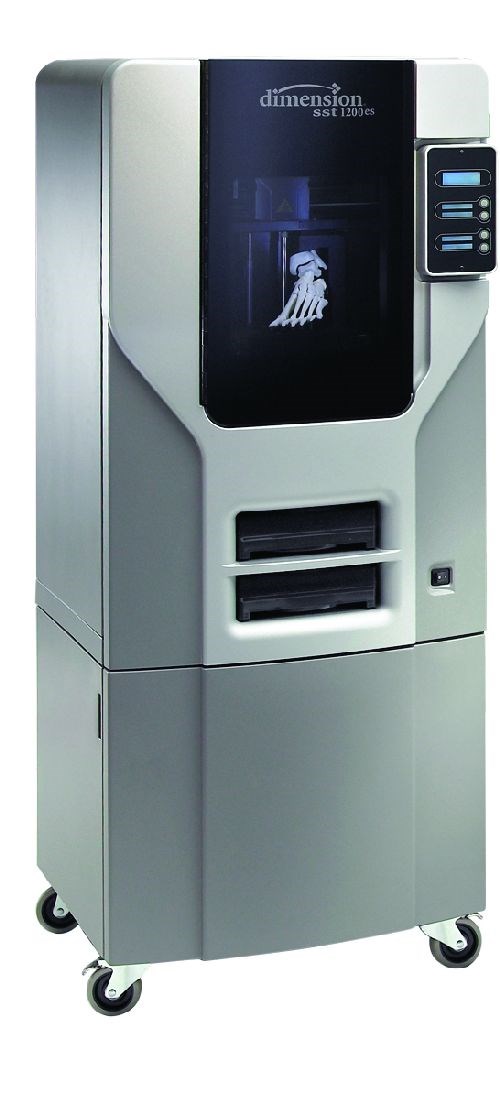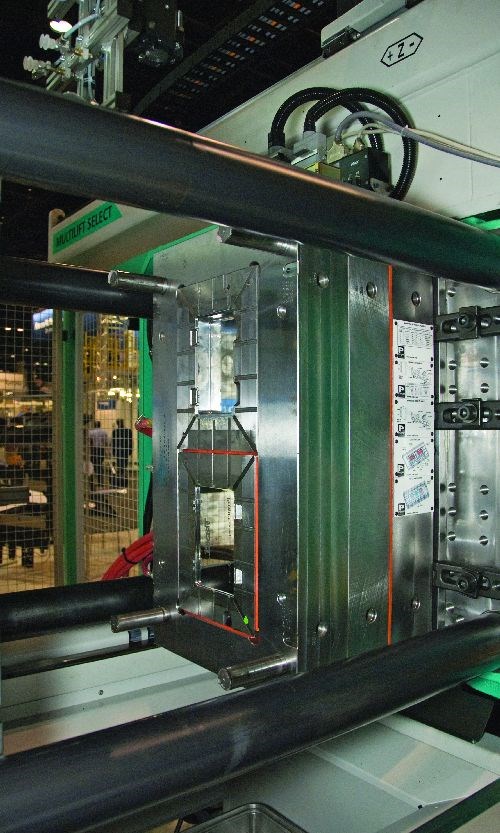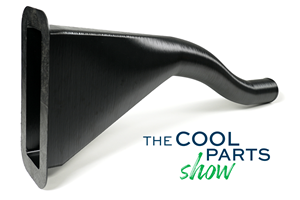3D Printing for Better Customer Communication
Additive technology helps a mold manufacturer establish better customer communication and create a more productive design process.
3D printers can be an essential extension of a shop’s overall CAD system and a critical part of the entire design process. Developed for workstation and network access much like a standard laser printer, 3D printing offers a fast, low-cost alternative for building concept and working models, according to Joe Hiemenz, technical communications manager for 3D printing equipment maker Stratasys.
Printing Perks
The Dimension 3D printer is easy to install and use in an office environment, Proper says. Most parts built in the 3D printer are begun in the evening and completed the next day. This enables designers and engineers to produce a part—for example, head-lamp/tail-lamp components or HVAC or console parts—that may have poor tooling conditions that need to be addressed in the design. Having a physical part in-hand when explaining the corrective options to the customers is very useful.
“3D printing has enabled us to communicate more clearly with our customers who may not be CAD literate or have access to CAD data,” Grippe says. “To be able to hold the physical part as opposed to looking at it virtually helps them better understand what the conditions and issues are that we are discussing.” Athough Proper doesn’t market its 3D printing capability directly, the company sees this capability as a value-added service it increasingly needs to have in order to compete.
Whether to own 3D printing technology yourself or outsource the service is a decision to be made based on a solid business case. According to Joe Hiemenz of Stratasys, while there are many variables when comparing service provider costs with internal 3D printing costs, a company sending one relatively simple part per week to an outside service provider could, by comparison, pay for a 3D printer in a matter of months, and maintain control and confidentiality internally.
Related Content
Aircraft Ducts 3D Printed in Composite Instead of Metal: The Cool Parts Show #68
Eaton’s new reinforced PEKK, tailored to aircraft applications, provides a cheaper and faster way to make ducts compared to formed aluminum.
Read MoreQ&A With Align EVP: Why the Invisalign Manufacturer Acquired Cubicure, and the Future of Personalized Orthodontics
Align Technology produces nearly 1 million unique aligner parts per day. Its acquisition of technology supplier Cubicure in January supports demand for 3D printed tooling and direct printed orthodontic devices at mass scale.
Read More6 Trends in Additive Manufacturing Technology at IMTS 2024
3D printers are getting bigger, faster and smarter. But don’t overlook the other equipment that the AM workflow requires, nor the value of finding the right supplier.
Read More3D Printing with Plastic Pellets – What You Need to Know
A few 3D printers today are capable of working directly with resin pellets for feedstock. That brings extreme flexibility in material options, but also requires greater knowledge of how to best process any given resin. Here’s how FGF machine maker JuggerBot 3D addresses both the printing technology and the process know-how.
Read MoreRead Next
Crushable Lattices: The Lightweight Structures That Will Protect an Interplanetary Payload
NASA uses laser powder bed fusion plus chemical etching to create the lattice forms engineered to keep Mars rocks safe during a crash landing on Earth.
Read MoreProfilometry-Based Indentation Plastometry (PIP) as an Alternative to Standard Tensile Testing
UK-based Plastometrex offers a benchtop testing device utilizing PIP to quickly and easily analyze the yield strength, tensile strength and uniform elongation of samples and even printed parts. The solution is particularly useful for additive manufacturing.
Read MorePostprocessing Steps and Costs for Metal 3D Printing
When your metal part is done 3D printing, you just pull it out of the machine and start using it, right? Not exactly.
Read More




















